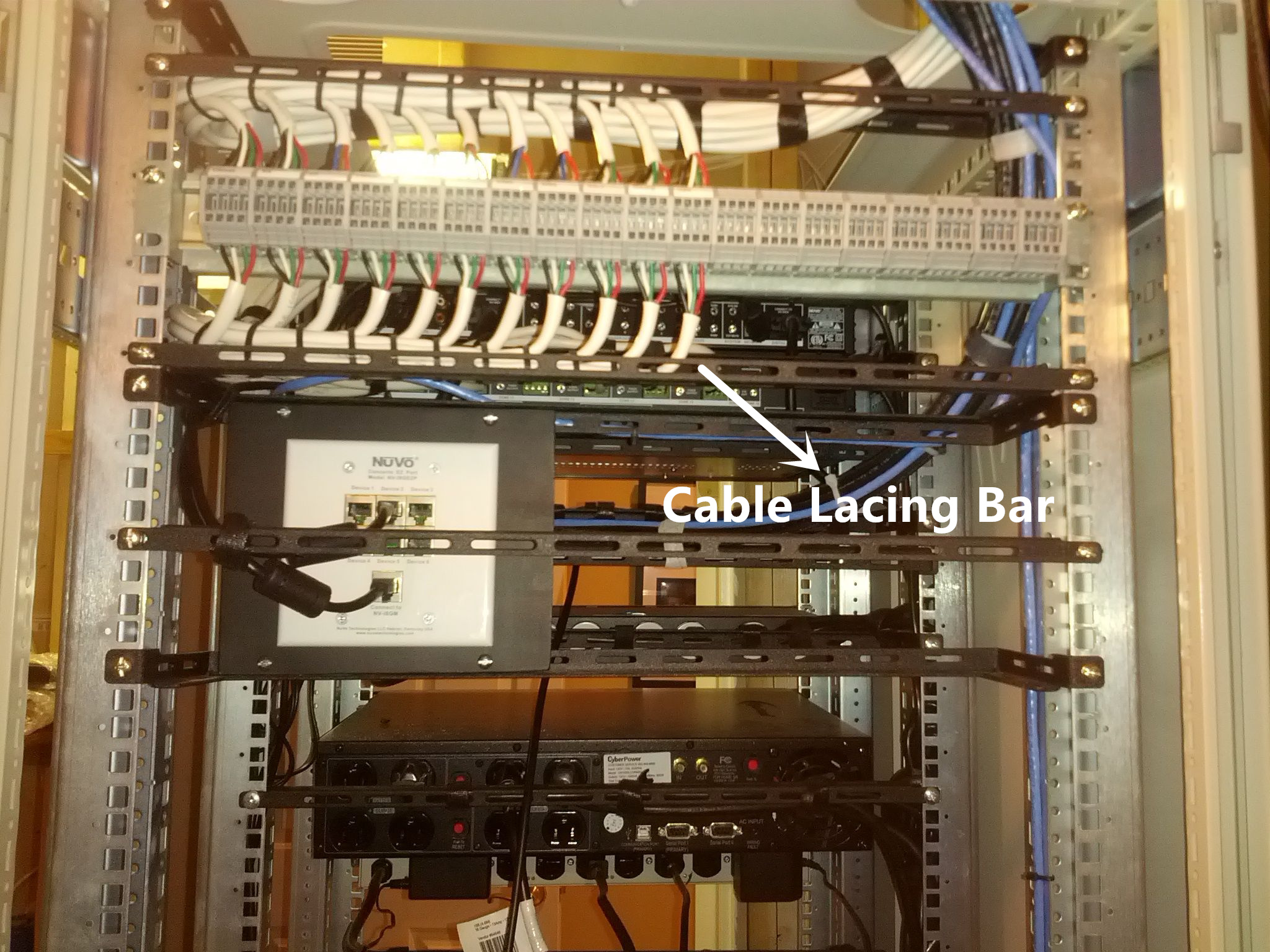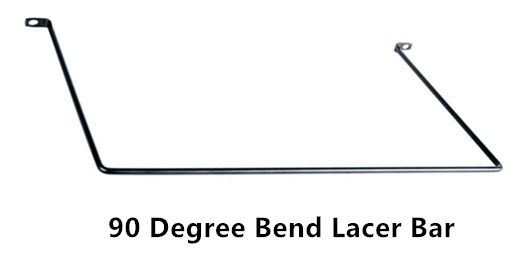Cable lacing is a method widely used for cable management. For applications in telecommunication, navy, and aerospace, it is often used for tying cables in an organized sequence. Traditionally, cable lacing will use a thin cord to bind together a group of cables with a series of running lockstitches. Today, cable lacing bars and cable ties are typically used to perform cable lacing. Cables can be bound by the cable ties onto the cable lacing bar. Of course, cable lacing bars also have different shapes to meet different cabling demands. This article will guide you to explore the world of cable lacing bars.

Cable lacing bars or lacer bars are made of metal designed to mount above, below, behind, or in front of your network devices. They are often seen in racks (between switches and patch panels) or enclosures. The pressure of cable connections is greatly relieved by the support of cable lacing bars. Installing the cable lacing bar is pretty easy. Only several screws are needed to fasten each end of the bar onto the rack. The width of cable lacing bar is the standard 19 inches, but the height is usually optional of 1U or 2U.
Why are cable lacing bars so popular for cable management? Here lists some advantages of using the assemblies.
- Point 1, cable lacing bars are space-saving. The bars use less than one U space, or none at all if mounted in front of or behind equipment. Thus, the valuable U space is saved for other network installation needs.
- Point 2, cable lacing bars provide numerous cable lacing points. Almost entire length of the bar is neatly covered with lacing slots, which allows for easy cabling along the whole bar.
- Point 3, cable lacing bars relieve the strain of cables. When large amounts of cables are installed in the rack, cable stress will also increase accordingly. Using cable lacing bars can relieve cable stress and avoid pulling cables when routing them from one side of a rack to the other.
- Point 4, cable lacing bars promotes good bend radius. If bend radius of fiber cables is well-protected, risks like slower data speeds and broken cables will no longer exist.
In general, there are six types of cable lacing bars. Each one is designed for a specific cabling environment. From the descriptions below, you can know which one is the perfect solution for your application.
Round lacer bars are used for individual or a small amount of horizontal cables. The rod has flattened ends and its diameter is 1/4 inch.

When lacing small bundles or individual cables off the rear of equipment, patch panels and other components, round lacer bars with offset are used to relieve cable stress from the connections. Appropriate offset should be selected based on the distance from the rear of equipment to the rack rail.

Square lacer bars are suitable for cable routing at the rear of equipment. They are also used for vertical or horizontal cable lacing. Similarly, they are still designed with 1/4” diameter rod and flattened ends.

L-shaped lacer bars are much stronger and provide fixed lacing points. More cables can be supported by this type of bar. You should also mind the distance from the rear of equipment to the rack rail for offset choosing.

90 degree bend lacer bars are special for the 90 degree bend which provides a full-width support. They can also be used for clearance around components that extend past the rear rack rail.

Horizontal lacer panels are typically used for large lacing amounts of cables or mounting devices. They have large flanges, numerous lacing points and more surface for mounting.

Since cable management takes an important role in structured cabling, cable lacing bars are an ideal solution for efficient and safe cable routing. Choosing the right type of cable lacing bar is also necessary for making the best use of it. Thus, you’d better choose wisely and consult the professionals if needed.
